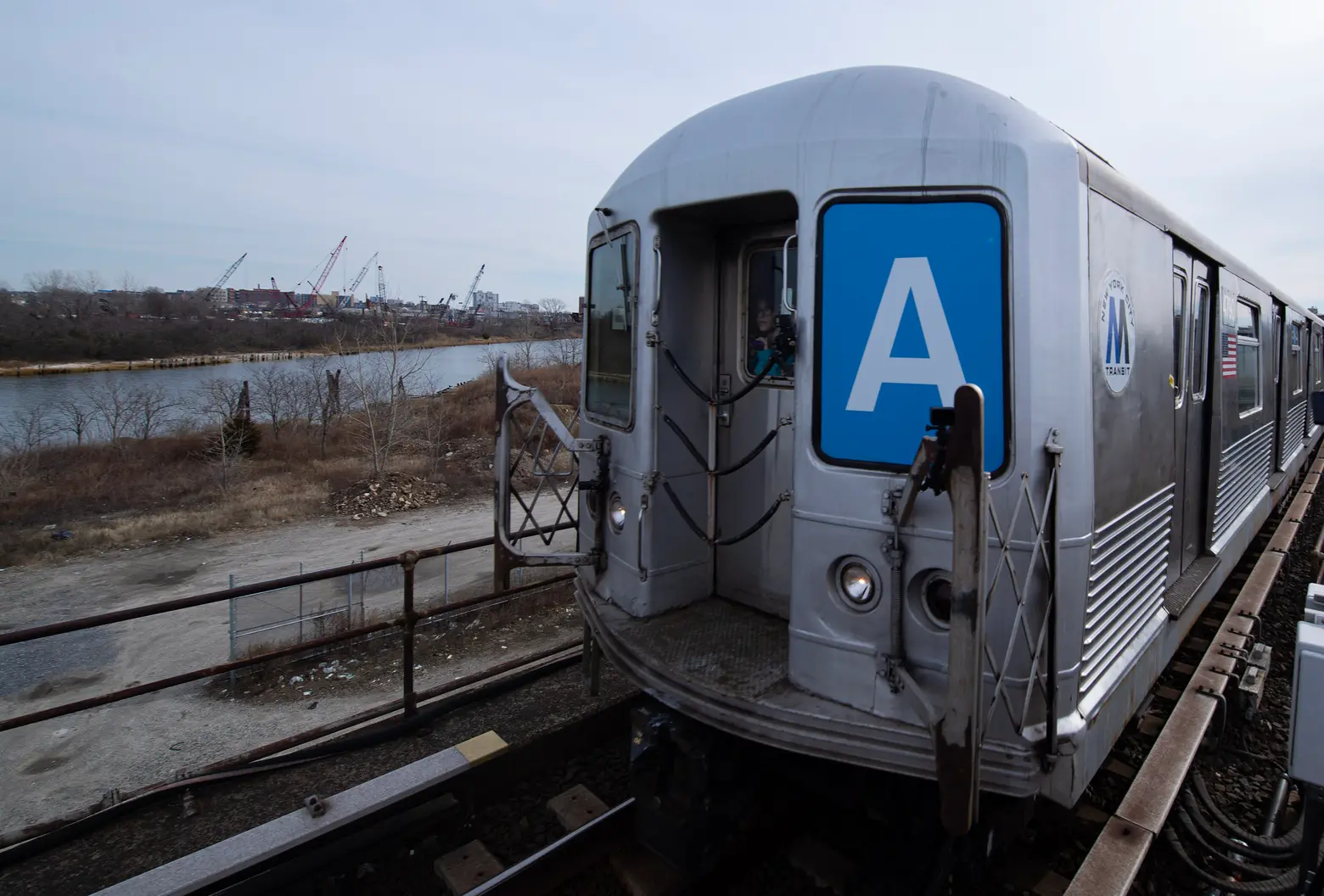50-year-old R-42 subway cars are finally being retired

The final run of the R42 trains on the A line near Hammels Wye in the Rockaways on February 12, 2020. Photo by Marc A. Hermann / MTA New York City Transit
The NYC subway rolls a little further into the 21st century today: The MTA is finally retiring its Nixon-era R-42 trains. The silver half-century-old R-42s, first rolled out in 1969 (the same year “Sesame Street” debuted), will make their last run today along the A line before being permanently retired, having already been mostly replaced by the R-160 fleet (h/t NYPost). The new R-179s cars will eventually replace them (h/t Gothamist). The R-42 cars were scheduled to disappear in December, but the R-179s were pulled from the system due to problems with their door-locking mechanisms.
The train’s cars, with their grey bench seating, were the first in the fleet to be launched with all cars air-conditioned. More fun facts:
- The R-42s were featured in the famous “car vs. subway chase” in the 1971 film “The French Connection.”
- The R-42 was the last design to feature “married pairs,” where two cars are linked together along the train.
- Some of the retired R-42 cars are at the bottom of the Atlantic Ocean as part of an artificial reef program.
- Built by the St. Louis Car Company (now defunct), the first cars were used on the BMT Broadway Line.
A majority of the fleet was retired in the late 2000s, with about 50 cars still left in service on the J and Z lines. The R-42 is one of two post-war trains still in operation; the other is the R-32 which still runs on the A and C lines.
In a statement announcing the cars’ retirement, the MTA referenced a farewell salute from the popular Douglas Adams “Hitchhiker” series: So long and thanks for all the trips.
RELATED:
- MTA blames subway door problems on faulty locking mechanism
- 60 more subway stations will get MTA’s tap-to-pay system this month
- Half-price MetroCards to be available to all eligible low-income New Yorkers next month
- MTA approves $17B budget that includes controversial addition of 500 more subway cops




























